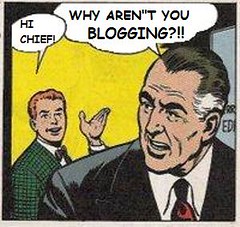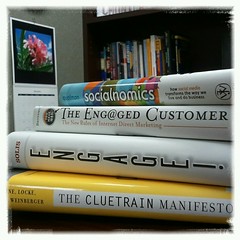Students in my Writing for Digital Media class wrote stories about Noah’s Ark, an organization in Lakeland that helps developmentally disabled adults and their families. Below, you will find excepts from their stories. To read the whole story, click on the story title.
Featured Stories
A Light of Hope For Parents of Individuals with Developmental Disabilities by Nick Tedeschi
Almost every parent looks ahead with mixed feelings to the point in their child’s life when they will finish school and move on to become independent young adults. However, this is not always the case, especially for those who are parents of children with developmental disabilities. These parents have to face the reality that 93% of children with disabilities will be unemployed upon leaving the public school system and most will remain unemployed for their entire life.
Jack Kosik, founder and director of Noah’s Ark, informed me of how parents with children with developmental disabilities have a neglectful mindset when it comes to their child’s future. “Many families just try to get through a day, or a week and pray that the future will take care of itself. They do not understand how challenging it becomes when an individual with a developmental disability exits the school system to a life of video games and soap operas.”
Healthy Eating Starts with a Garden by Mikelle Liette
Food shortage has been a growing concern for many Lakeland families as the economic downturn has left families scraping from the bottom of the barrel just to come up with the funds to purchase enough groceries to feed their family. According to the 2010 US Census, 14.9 % of Lakeland families fall below the poverty line.
Jack Kosik, executive director of Noah’s Ark of Central Florida, has recognized a greater concern for developmentally disabled adults. As many supportive services are being cut, community members with disabilities have been left without enough money to live independently, or to purchase healthy and nutritious foods. Noah’s Ark is a home that daily supports the developmentally disabled and assists them by educating them on important issues of guardianship, special needs trusts, and available services. In addition to the weekly array of social and recreational activities that Noah’s Ark hosts, Kosik has plans to begin a community garden….
Hope and Healing by Melanie Shoults
The green ball, flawless except for three small holes, rumbled down the lane in a swirl of color and plowed into twelve perfectly placed white pins. A cheer erupted from spectators and smatterings of high-fives were exchanged. Smiles spread from face to face, regardless of who was winning.
The cheerful group of adults appeared to be having the time of their lives with just a round of bowling. But this wasn’t just a game. As a fund-raiser for Noah’s Ark, an organization that aids in rehabilitating adults with developmental disabilities, the event was much more meaningful than that….
Additional Stories from COMM 2423 Class (in alpha order)
Jack Kosik’s Ark by Dean Adams
What happens when individuals with “intellectual disabilities” lose their main center of support? Their parents, what happens when their parents leave this world and leave their sons and daughters behind with no one to care for them? If only there was a facility “designed to be sensitive to the unique needs of individuals who are intellectually challenged” and for a long time there was no such place. Before 1997 there was no such place in Florida and as well as there being no place there were some troubling facts around this time concerning those with developmental disabilities in Florida….
Noah’s Ark: Making a Difference . . . Differently by Daniel Barcelo
Noah’s Ark. An organization “committed to empowering individuals who have developmental disabilities by advocating on their behalf and by providing or facilitating choices of meaningful employment, recreational and social opportunities and affordable housing in an inclusive community of their choice.” This mission, and a personal dream of its founder, Jack Kosik are at the core of this organization….
Love of a Mother by Laurita Carranza
A young adult, full of energy, with so much shine to give, but yet no one notices him. This is exactly what occurs with individuals who have developmental disabilities. These individuals are all around us. They might be the one that shops at the same store you do, at the restaurant you go, and might even sits right next to you in your favorite class. You won’t notice because all you care is who you are seen with. Do me a big favor and say hi to these individuals when you see them, don’t ignore them like if they don’t exist….
Will You Help Build the Ark? by Liz Colburn
What is Noah’s Ark? Yes, it is a big boat built by Noah back in Bible times to avoid a world wide flood – but – that is not the Noah’s Ark I am talking about. Noah’s Ark is a living facility based in Lakeland, Florida that houses special needs adults. The purpose for Noah’s Ark is so that parents who can either no longer physically take care of their adult children or can not take care of them for other reasons, live in peace by knowing their children are being cared for….
The Past, Present and Future of Noah’s Ark by Annalee Cole
Imagine being the parent of a mentally disabled child. Now imagine growing old and knowing that one day you must part ways with them. Where does the future of your child lie when all they know is you? …
Noah’s Arc by Tara Duffy
There is a blind spot in the Americans eyes. While most people in this world can walk around not seeing the problems, some people Like Jack Kosik see the blind spot and actively try to fix it…
The Ark Has Arrived by Johny Fernandez
Have you ever wondered what it would be like to be young and not be able to move out of your parent’s house? Many young adults with developmental disabilities also desire to grow independently but cannot. Living with a developmental disability not only limits living life normally but also, for many, may create an internal isolation from the world. For parents dealing with this situation, many of them cannot live comfortably knowing that their child may never grow independently….
Noah’s Ark: Changing the Lives of Lakeland Families One by One by Taylor Flumerfelt
In 1996, five families began the search for a facility whose mission is to take care of developmentally challenged people after which they could create their own organization. These five families did not want to only give back to the community; they were worried about the future of their developmentally challenged children. What would happen to their children after they passed away? The answer to this question was unclear and they sought to answer it through researching the many services available all over the country…
Noah’s Ark Encourages Residents to Live, Laugh, Love–and Get Active by Amanda Furmage
Just over four years ago, Jeff Albro began his journey for freedom and independence. His developmental disability would no longer prevent him from fulfilling his dreams. Yet his new life soon came to an abrupt, unexpected halt. After a few months of living autonomously in a Plant City public housing project, Albro was beaten and robbed—an experience that left his body bloody, broken and bruised. However, the severe emotional distress that resulted from the incident affected Albro more than the temporary physical damage.
Bringing Unity to the Community by Sarah Hassani
Elvis entered the doors of the Lakeland Harbor Community Clubhouse on September 5, 2011 to perform some of his top hits and the crowd went wild! The music was loud, the dancing was groovy, and the food was finger lickin’ good. 84 people witnessed this night unfold but were you one of them?
This 50’s sock hop event is one of the many events hosted by Noah’s Ark, a non-profit organization dedicated to empowering those with developmental disabilities. Among many things, they provide a housing residence and assist the disabled in finding employment and every month they provide opportunities for the community to get involved by participating in their events….
Jack Kosik Seeks to Build Noah’s Ark by Tiana Holding
Most people know the story of Noah from the Bible, even if they’ve never read it. Movies likeEvan Almighty give it a modern-day twist. In the Bible, Noah is commanded by God to build an ark. He was to build an ark as a place of safe refuge for him, his family, and 2 of every kind of animal on the Earth. Noah’s Ark was a way to start over.
Today, Noah’s Ark is a place of safe refuge for people with developmental disabilities. It is a place to start over, a community for people with disabilities to live together, yet on their own.
Parent of Disabled Individual Finds Hope Through Local Organization by Rachel LaFlam
It is the first time in his life that 81-year-old Lee McClure is able to enjoy empty-nest syndrome. Lee sits on his back porch in Lakeland, Fla. and can now enjoy his old age, knowing that everything is taken care of—everything meaning his 51-year-old mentally challenged son, Neal.
In the Arms of Love by Naida Lindberg
It all began with a story. The story of Noah’s Ark is not that of a flood, nor of animals but rather a daughter. This story would change the lives in more ways then one. What about Jack and the parents of those who spend nights wondering what will happen to their children after they have gone? There is hope in this story. This is their story. In 1997, Joanne and Hank Warnock enrolled their son into Noah’s Ark. Having never seen a program like Noah’s Ark it seemed like an answer of prayer. This however, is not just the story of Noah’s Ark but it is about a loving family….
Noah’s Ark by Chelsey Lynn
Noah’s Art is a unique place. Its a place where one can find some peace, some belonging. Noah’s ark is an organization that is committed to empowering individuals who have developmental disabilities by advocating on their behalf and by providing or facilitating choices of meaningful employment, recreational and social opportunities and affordable housing in an inclusive community of their choice.
Lee McClure is a parent who took an extraordinary step for independence for his son, Neal. He reached out to Noah’s Ark in hopes for his son to live there, with more freedom and independence, knowing that he would be taken care of if anything were to happen to him….
An Unfinished Home by Emily Meade
“Home. It’s more than a place to rest your head. It is at home where we are free to be our truest self. It’s a soft place to fall when the world gets too hard. It’s where we build memories and live out the small details that make up a life. It’s where we store our treasures, read a book, take a nap and talk with friends. Our home, wherever that may be, is an extension of our inner self. The picture is often quite different for people with disabilities. For those with disabilities home can mean no choice, crowded and unpleasant conditions, unfair treatment, no privacy and no personal connection to the place where they are forced to live.”
Fortunately, because of one man’s determination and passion, individuals who are intellectually disabled do not face that challenge. Fourteen years ago marks the beginning of the journey Jack Kosik embarked on into the unknown. Upon adopting a baby girl who was later found with developmental disabilities, Jack sought to find a place where his daughter, Brittany, could reside once he could no longer support her needs sufficiently. Just as every other parent in that similar situation, they find few comfortable options that are available and if so, the wait lists are high in numbers….
Why Noah’s Ark by Elizabeth Telg
When you think of Noah’s Ark what comes to mind? A big boat? Lots of animals? A big rainbow? Well there’s a new Noah’s Ark that doesn’t involve wiping out all of mankind. Noah’s Ark of Central Florida is a unique living facility that houses special needs adults. But why would one get involved? …







